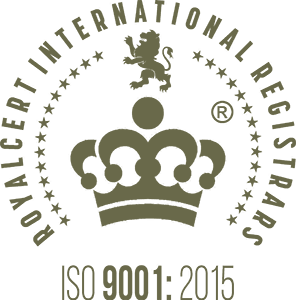The basics of aircraft maintenance and safety processes
Aircraft are finicky, demanding, high maintenance creatures. Skimp on taking care of them and they’re likely to bail at the worst possible moment. See Boeing. The aviation industry and especially aircraft manufacturing and maintenance is one of those industries where it pays to be obsessive. Good maintenance practices keep aircraft in a state of airworthiness, to be safe for crew and passengers, as well as anyone in its service area.Aircraft that are subject to regular maintenance not only last and remain valuable for longer but are also safer, less prone to major repairs and are less susceptible to wear and tear damage.
Aircraft maintenance is not a one size fits all operation. It is a highly-regulated field and requires a robust regimen of scheduled or preventive servicing, inspection, testing, repair, and overhaul or modification activities by certified Maintenance, Repair and Overhaul (MRO) technicians on every aircraft in service.
What’s needed, when and how often depends on the type of aircraft, age, flight hours, environment as well as the situation.
Personnel safety
A robust maintenance strategy begins with personnel safety underpinned by good working practices, regular training programs and scrupulously clean, meticulously organized hangar and ramp spaces. All aviation personnel should wear safety gear and be fully equipped with the tools and gear required to perform their duties safely and efficiently. This includes technicians who must wear safety glasses, rubber gloves, grounded safety mats, and whatever other safety gear might be needed to protect themselves and those around them.
Line maintenance
Line maintenance takes place while the aircraft is still in its operating environment. It’s performed to ensure that the aircraft is airworthy and ready for flight, and typically takes place between flights or overnight. Line maintenance includes a variety of tasks, such as:
- Pre-flight checks
- Daily fluid checks
- Scheduled minor repairs and modifications
- Troubleshooting
- Routine inspections
- Day-to-day checks
- Replacing Line Replaceable Units (LRUs)
- Checking, inflating, and replacing tires
- Assessing and maintaining brake systems
Line maintenance is often performed on the ramp or at the gate, and it’s usually done under tight schedules to minimize disruptions to flight operations. The goal of line maintenance is to address immediate issues that could affect the aircraft’s safety, efficiency, or flight schedule, and to ensure that the aircraft meets all necessary standards for operation.
Regular Inspections
A basic aircraft maintenance drill must be performed on a regular schedule. The most basic aircraft maintenance check, it is typically performed every 400 to 600 flight hours and helps identify any defects or issues that may have appeared during that time. During this check all components are minutely inspected including fluid levels, tires, brakes, avionics systems and flight controls as well as the aircraft’s exterior. Regular inspections can take up to 24 hours during which maintenance technicians will inspect emergency equipment, change filters, and lubricate equipment. Sometimes this check may include a more detailed inspection of the aircraft’s systems, engines, landing gear, and structural components to pre-emptively identify any potential issues and ensure the aircraft remains in optimal operational condition.
Comprehensive Inspections
An extensive maintenance check conducted every 18 to 24 months, this is designed to ensure all critical components are in good condition and all repairs or replacements have been carried out. During this inspection technicians build on a regular inspection by examining the aircraft’s engines, landing gear, structural components, and electrical systems in exhaustive detail. They also conduct in-depth lubrication of fittings and cables. This inspection can take anywhere from one to four weeks.
Heavy Maintenance Checks
Conducted every six to ten years, at large, well-equipped hangars, this is the most extensive and time-consuming maintenance check. Maintenance technicians dismantle and thoroughly inspect the aircraft components and systems, conducting repairs and overhauls as needed. This is when worn-out or damaged parts are identified and replaced. This inspection can take up to several weeks and is both labour and capital intensive. This check incorporates the regular and comprehensive inspections and builds upon them by removing and inspecting interior elements including seats, toilets, and galleys, to allow for an inspection of the aircraft’s metal skin. The check is designed to ensure the aircraft is maintained to the highest standards of continued airworthiness and safety.
Aircraft owners and operators that conduct regular pre-flight, inflight and post-flight inspections in addition to the above scheduled inspections will inevitably improve the performance and safety of their aircraft while also extending their life and maximizing their value.
KAMS Global is a maintenance partner to some of the world’s best known aircraft owners and operators. We are MRO specialists and have provided CAMO, Inspection and Maintenance services to global clients. We have built an enviable reputation for trust and excellence. To find out more about our services or how we can help you, please do get in touch or visit our website.



